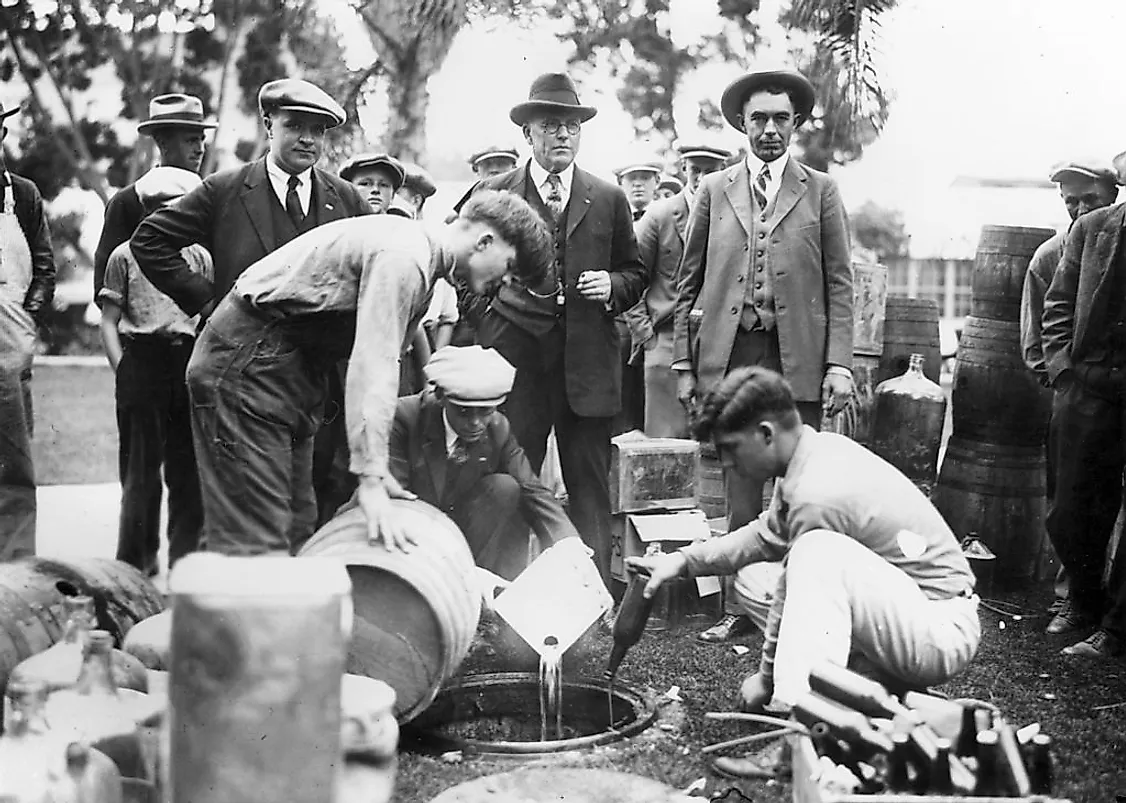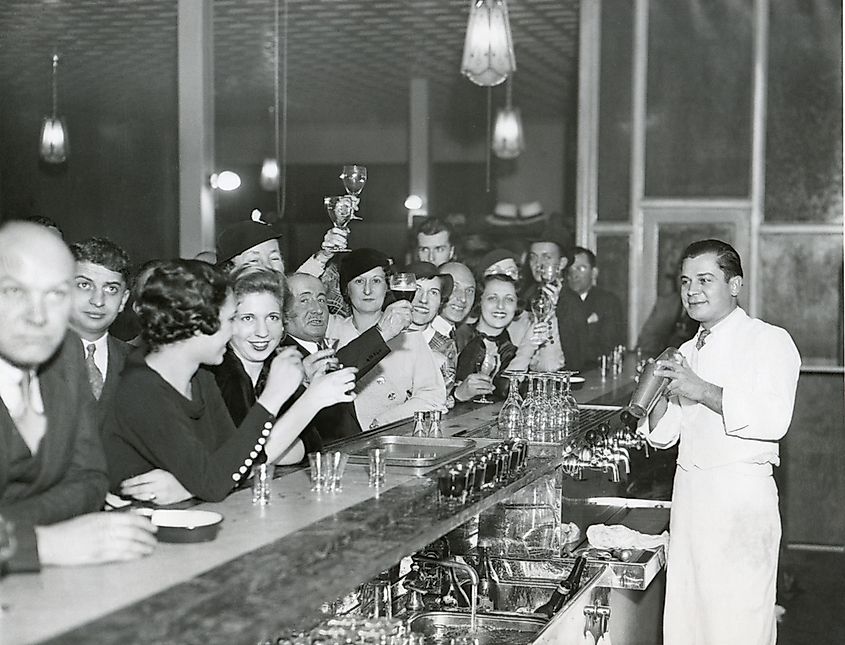What Was Prohibition in the United States?

Prohibition refers to a period of time in the US during the 19th Century when the production, distribution, and consumption of alcohol was banned. The period lasted from 1920 to 1933. This ban was implemented after a widespread petition from temperance movement and dry crusaders. It was brought forth by an amendment to the United States Constitution called the Eighteenth Amendment. The intention was to lower the rising crime rate, improve the health status of the population, and reduce poverty levels. However, the ban on alcohol allowed groups like gangs and the Mafia to grow, many of which saw an opportunity through the illegal selling of alcohol (called rum-running or bootlegging). This, paired with some other outcomes, led many to argue that Prohibition in fact had the opposite effect of what was intended.
Background On Prohibition And Its Implementation
The fight for the prohibition of alcohol started in the 1800s and extended to the early 1920s, spearheaded by activists who believed alcohol was contributing to the high crime rate that was emerging in American society. The American Temperance Society and the Anti-Saloon League were the major powers behind the ratification and implementation of the Volstead Act. The Volstead Act was ratified by 36 of the 48 states in 1919. The Volstead Act enabled the 18th Amendment to be enforced. Of all the states, only Rhode Island and Connecticut never ratified the act. However, even without the support of these two states, the three-quarter rule was achieved, and the law was enacted to ban alcoholic beverages nationwide. Immediately after the 18th Amendment came into effect, a special group of police, called Federal Prohibition agents, were dispatched. 1,520 police officers were tasked with its implementation.
The law was met with much resistance during its initial implementation. At the time, there were many controversies around the medicinal value of alcohol, and alcohol was still available as prescribed by a doctor. Cider and wine were the only allowed alcoholic beverages to be made for domestic use only.
Challenges Faced In The Implementation Of Prohibition
From the outset, the 18th Amendment and the Volstead Act was viewed by the citizens as preposterous and unnecessary. The law was thus broken as early as 1925. The poor and middle-class people suffered the most consequences, but their masters stocked alcohol in their cellars. In fact, the majority of members of Congress and even the president stocked their home supplies. The poor class of the society created a new way of accessing alcohol illegally through bootlegging. Organized cartels and syndicates arose out of bootlegging. The cartels grew stronger with each passing day by expanding their territories to Mexico, Canada, and Cuba to buy rum, whiskey, and more. The illegal consumption of alcohol led to more organized crime and created the very problems it was intended to eliminate. During the late 1920s and early 1930s, more pressure was mounting on the government to disband the law. The law was growing weaker and faded with time, greatly because of the difficulty of its implementation.

Patrons celebrated when the prohibition of alochol mets its end.
Disbanding Prohibition And Its Impacts
The economic crisis that was hitting the country together with the pressure from the electorates forced the repeal of Volstead Act. In 1933, President Franklin Roosevelt signed the Cullen-Harrison Act. The act modified the Volstead Act allowing the sale of 3.2 percent beers and light wines. Finally, the 18th Amendment was repealed in December 1933. It was followed by the ratification of the 21st Amendment. There was substantial decrease in the level of alcohol consumption estimated at 60% at around 1925. The decreased consumption rates were also thought to have lowered the rates of cirrhosis. Prohibition is said to have led to an increased number of organized crimes. Bootlegging flourished, but this involved organized cartels that controlled territories. The number of crimes in 1921 was estimated to have risen by about 24%. Prohibition had also led to the collapse of many breweries. The industrialization within this sector was reversed together with its significant contribution to the country’s revenue.











